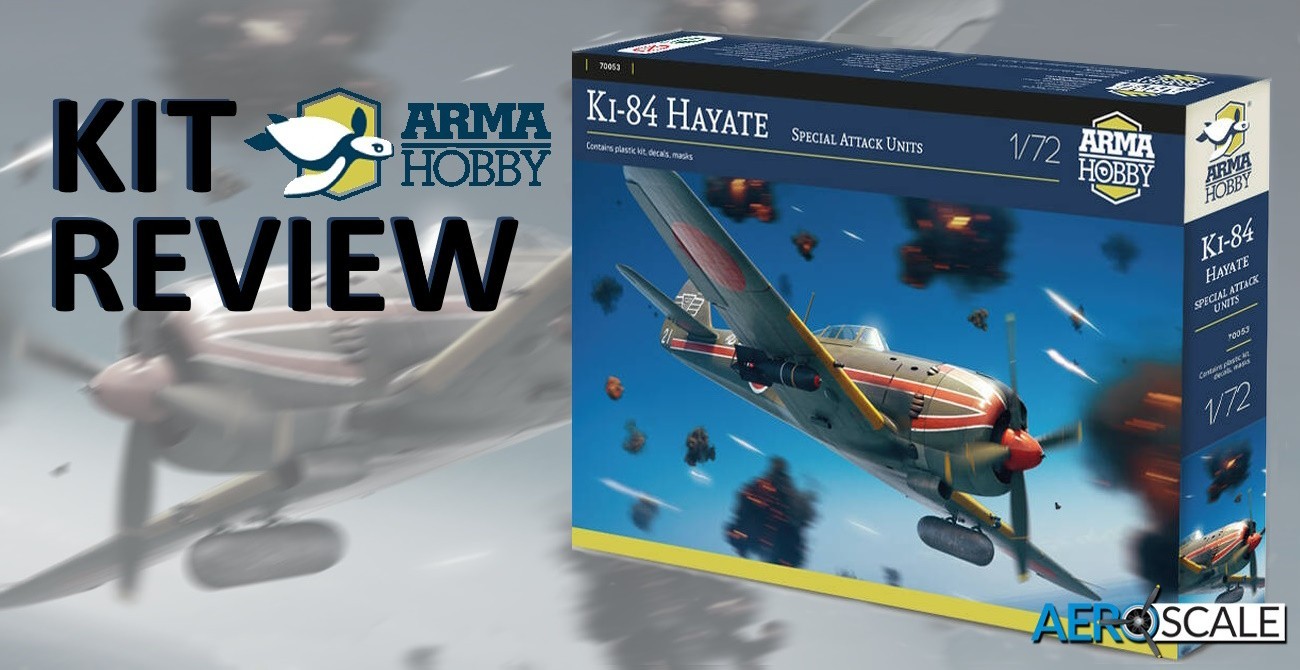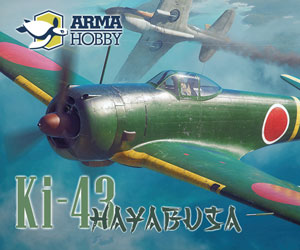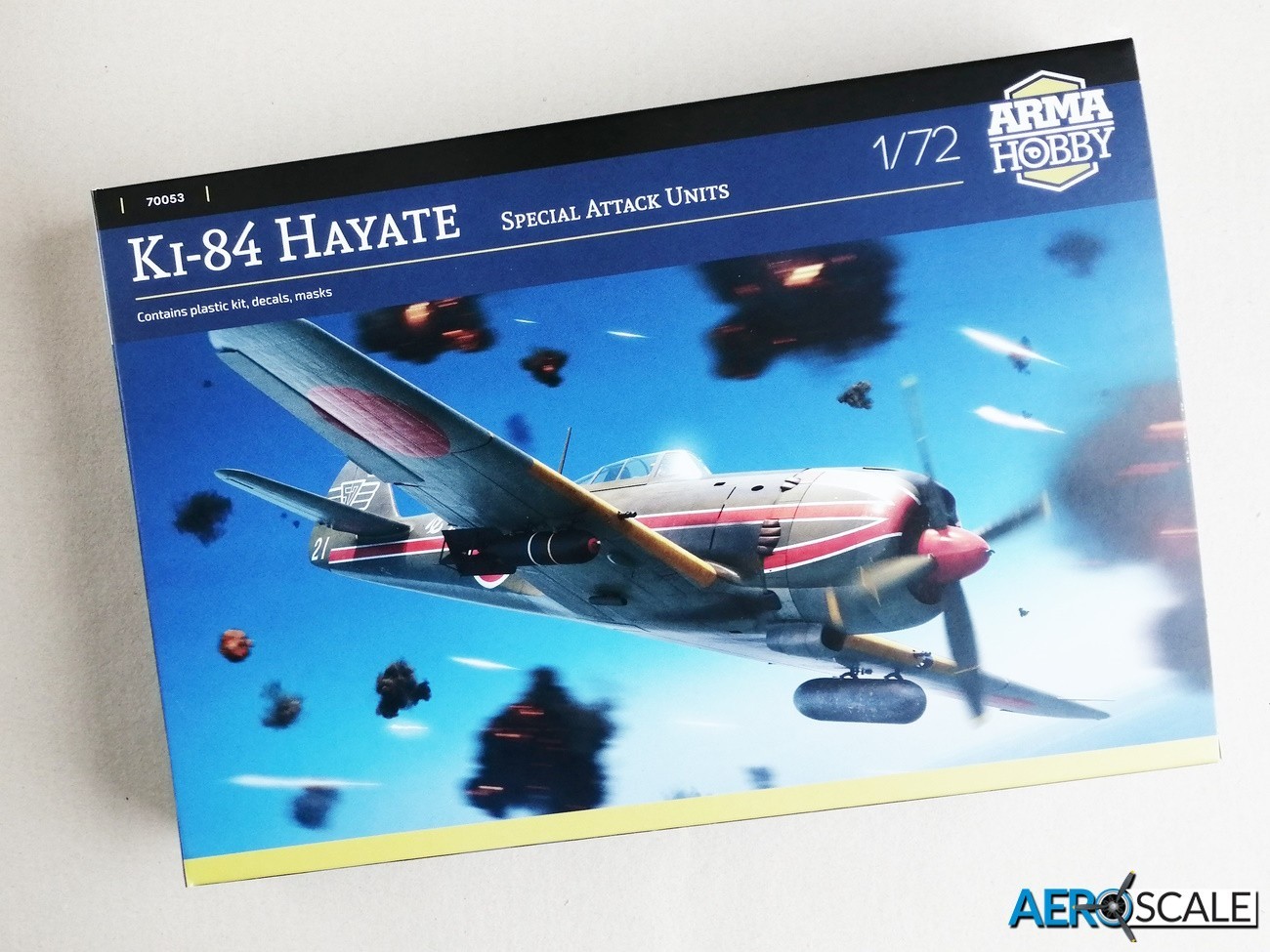
Background
Nakajima Ki-84 Hayate was operated by the Imperial Japanese Army Air Service for the last two years of WWII. It was officially designated the Army Type 4 Fighter, though it was given the name Hayate, translated as ‘Gale’. The Allies designated its type as ‘Frank’. It was a progression from the Nakajima Ki-43 Hayabusa ‘Oscar’. The Ki-84 boasted high speeds and excellent manoeuvrability with armament that provided quite a punch. The Ki-84 it offered better climb rate, improved armament, and armour and all gained at very little cost to the high manoeuvrability of its predecessor. The Ki-84 was acknowledged to be the finest mass-produced fighter the Japanese produced during WWII. The Ki-84 like many thoroughbreds needed careful airmanship and maintenance. The weak landing gear was prone to collapsing in the event of a heavy landing. The Ha-45 Homare engine needed constant attention to maintain its performance. The dwindling accessibility of quality fuel was a problem as well as a shortage of experienced pilots. Its performance at altitude was disappointing, but excelled at mid and low altitude. There were numerous plans to address the problem, including the use of other radial engines and as well as superchargers. None of these possible solutions were ever tested.
Towards the end of the WWII the ki-84 was employed in Japanese Special Attack Units or kamikaze [Shimbu-Tai]. The units were created with the belief that, in order to defend their homeland, conventional warfare was no longer sufficient. They were mainly used as escorts other aircraft on kamikaze raids on Okinawa. They were also used as fighter bombers, though it was known for the pilots of the Hayate to sacrifice themselves in the defence of their homeland.
After the war Ki-84 with the Ha-45 Homare was tested in the States using 92 octane AvGas and methanol injection. It achieved a speed of 427 mph [687 km/h] at 20,000 ft. In total of 3,514 Ki-84 Hayate were built.
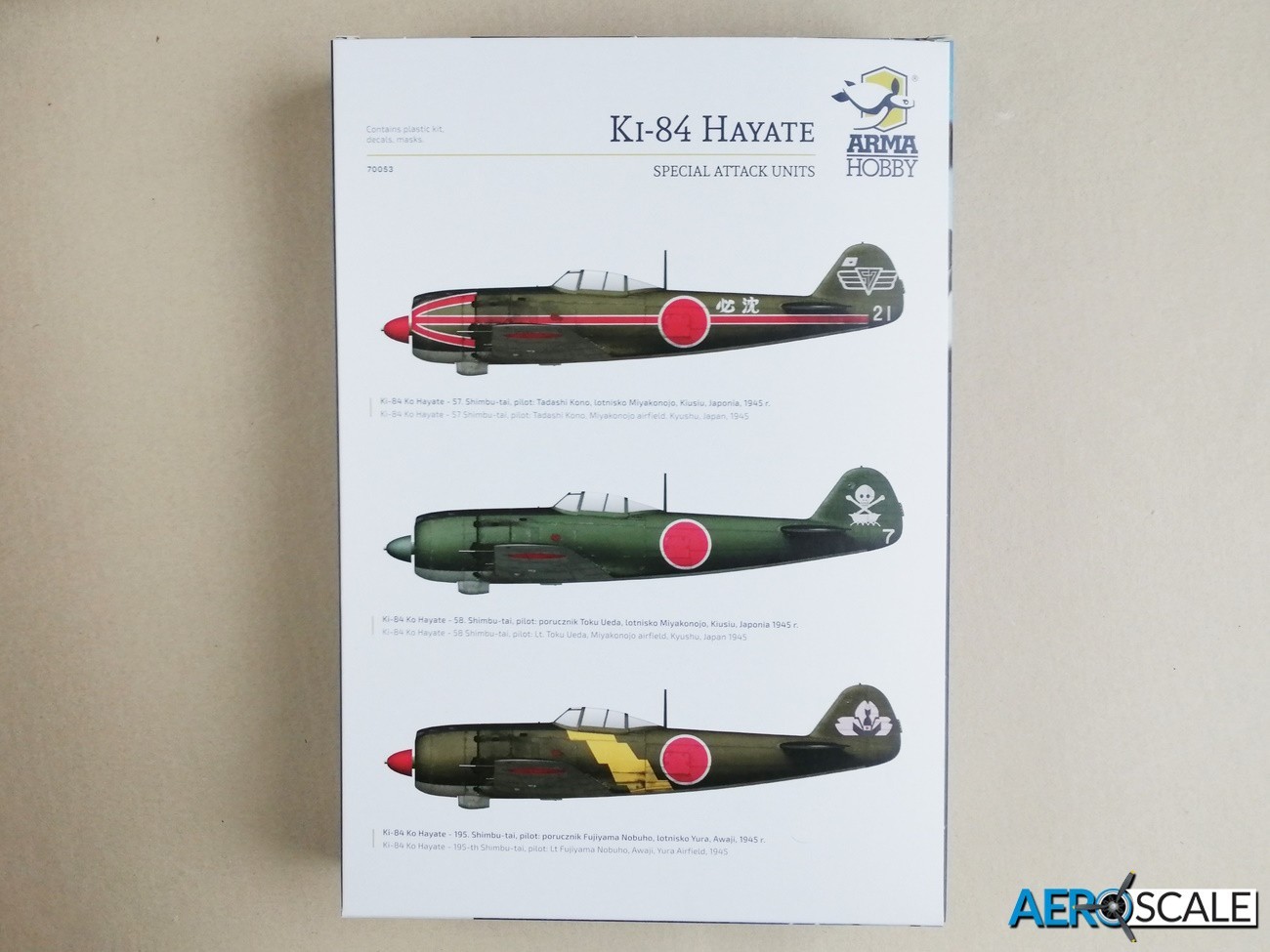
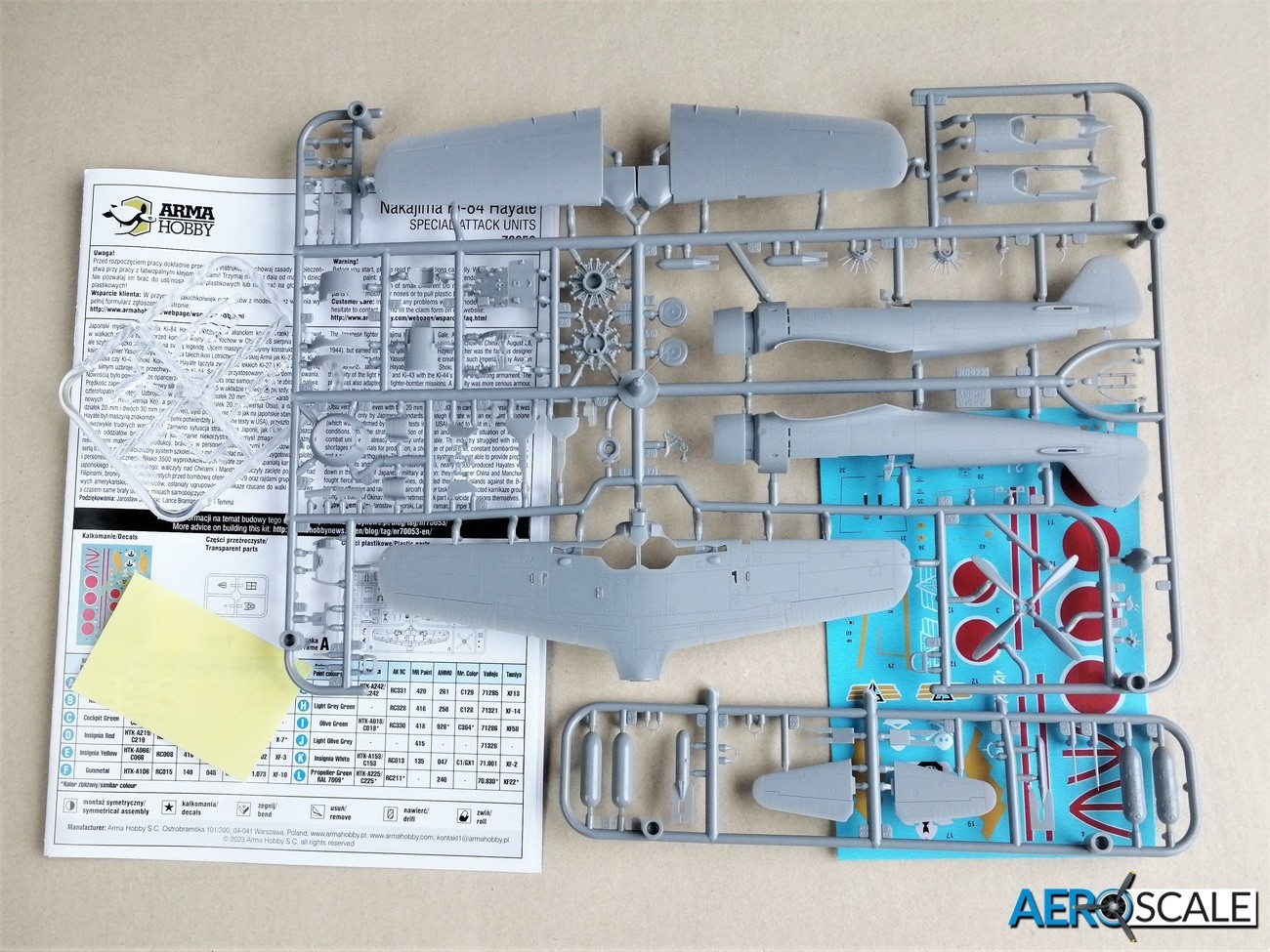
Arma Hobby’s latest edition of the Nakajima Ki-84 Hayate is focused on aircraft that served with the Japanese Special Attack Units. All three marking options feature the Ko which was the most widely produced Ki-84. It was armed with two 12.7 mm machine guns and two 20mm cannons all fitted in the wings.
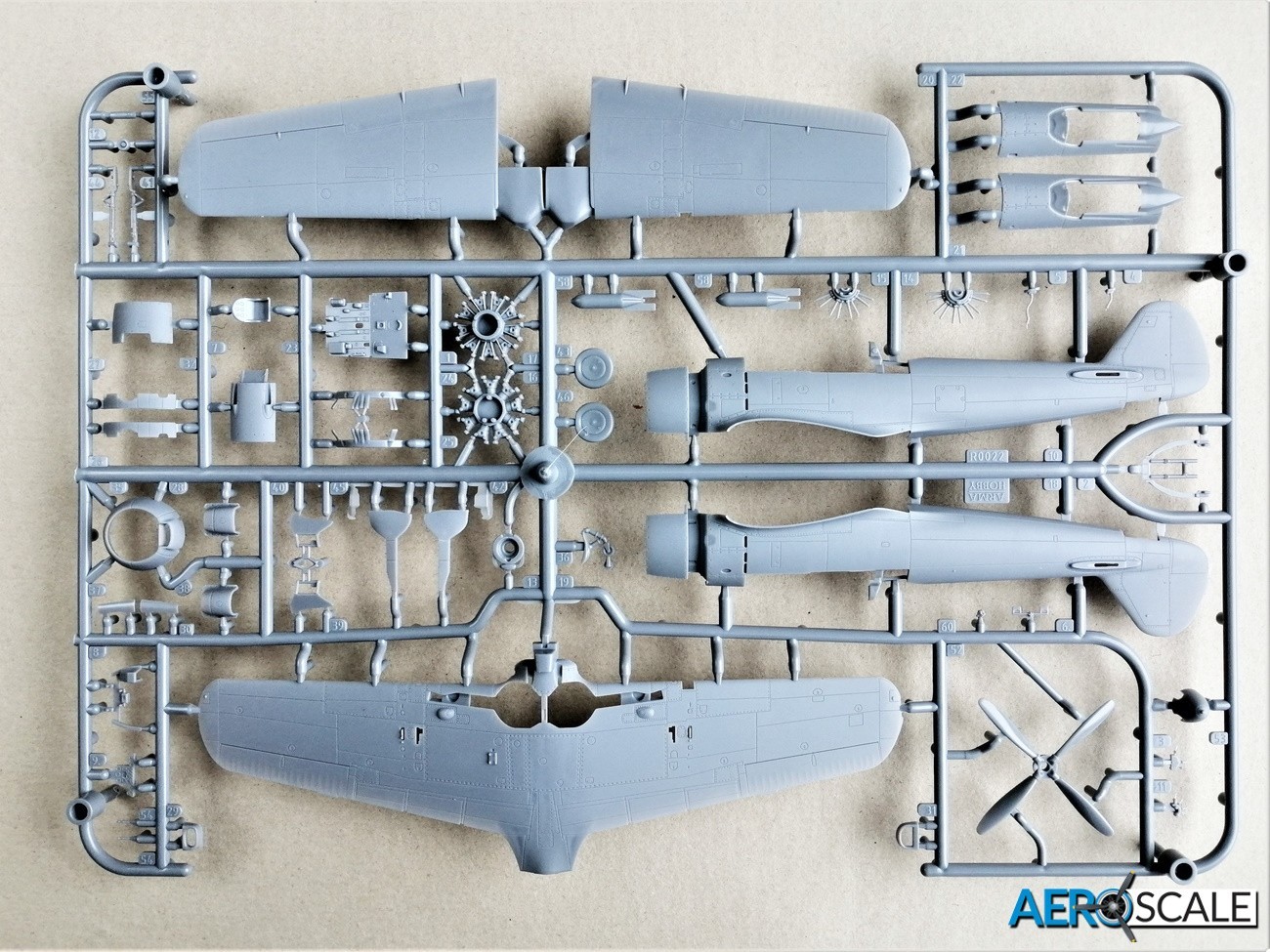

The Kit
The contents of the kit are contained in a side opening box. All the contents are placed in a single bag. The decals and paint masks are placed inside the instructions. Taking the sprues out of the bag Arma Hobby is maintaining their excellent reputation with the quality of the raised and recessed detail. The panel lines are sharp, consistent, and quite subtle, important attributes for a kit. There are locating pins and tabs included on the main parts.


There are eleven detailed parts making up the cockpit. The raised and recessed detail on the instrument panel [IP] and central console looks good. Three decals provide the detail for the instrument faces. The seat has three recessed circles, representing weight saving cut outs. You may want to drill the seat out to represent the perforated look. There are a couple of decals representing the harnesses. The attachment points on the plastic frame for the seat needs bending slightly. The detail on the sidewalls of the cockpit looks very good and will benefit from a light wash to further accentuate the detail.


The canopy can be displayed open or closed. The three clear canopy parts are crystal clear. There are two alternate sections of the fuselage into which the windscreen, rear glazing and canopy fit. One is for the canopy closed and the other is for it to be open.
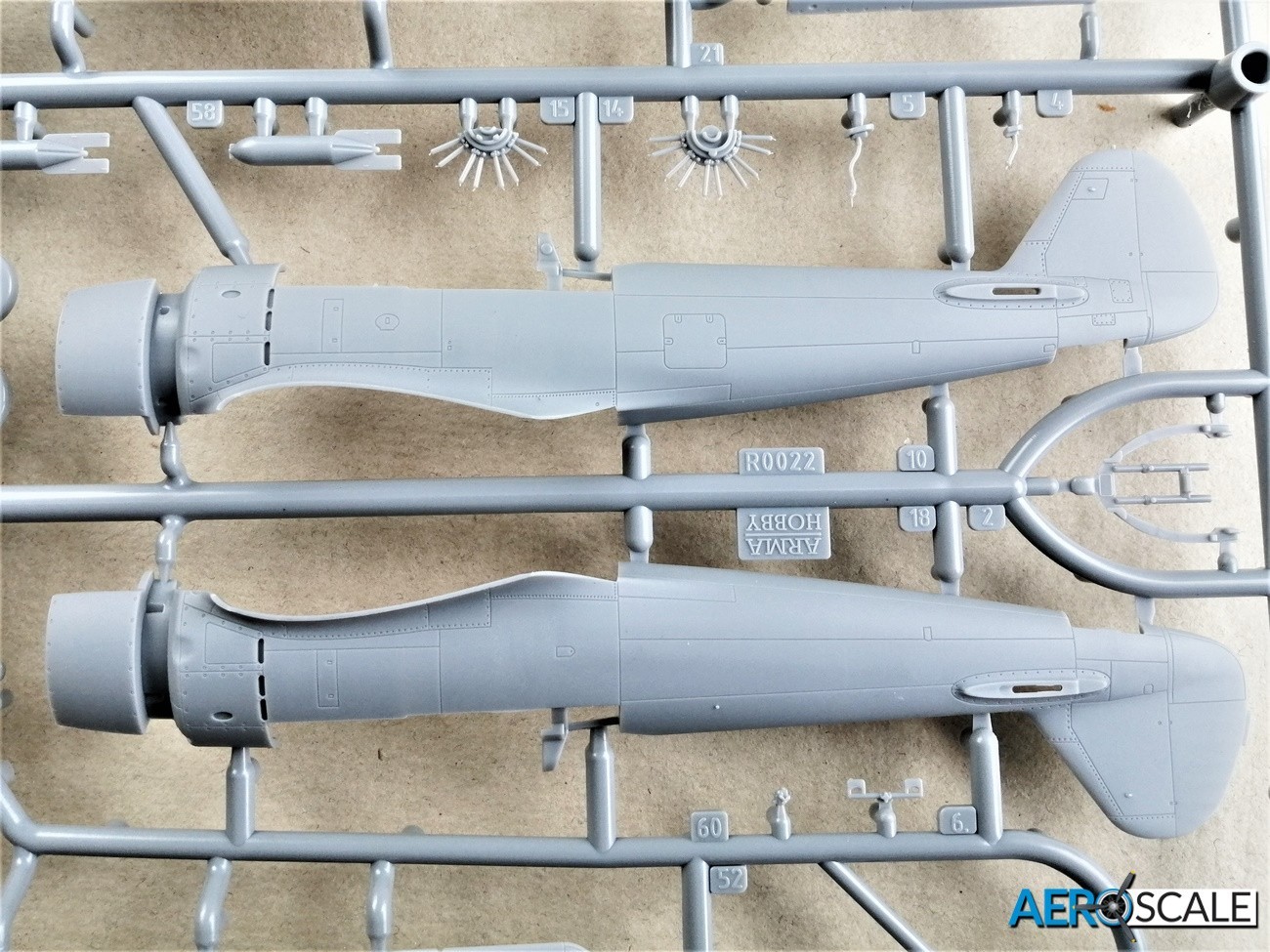
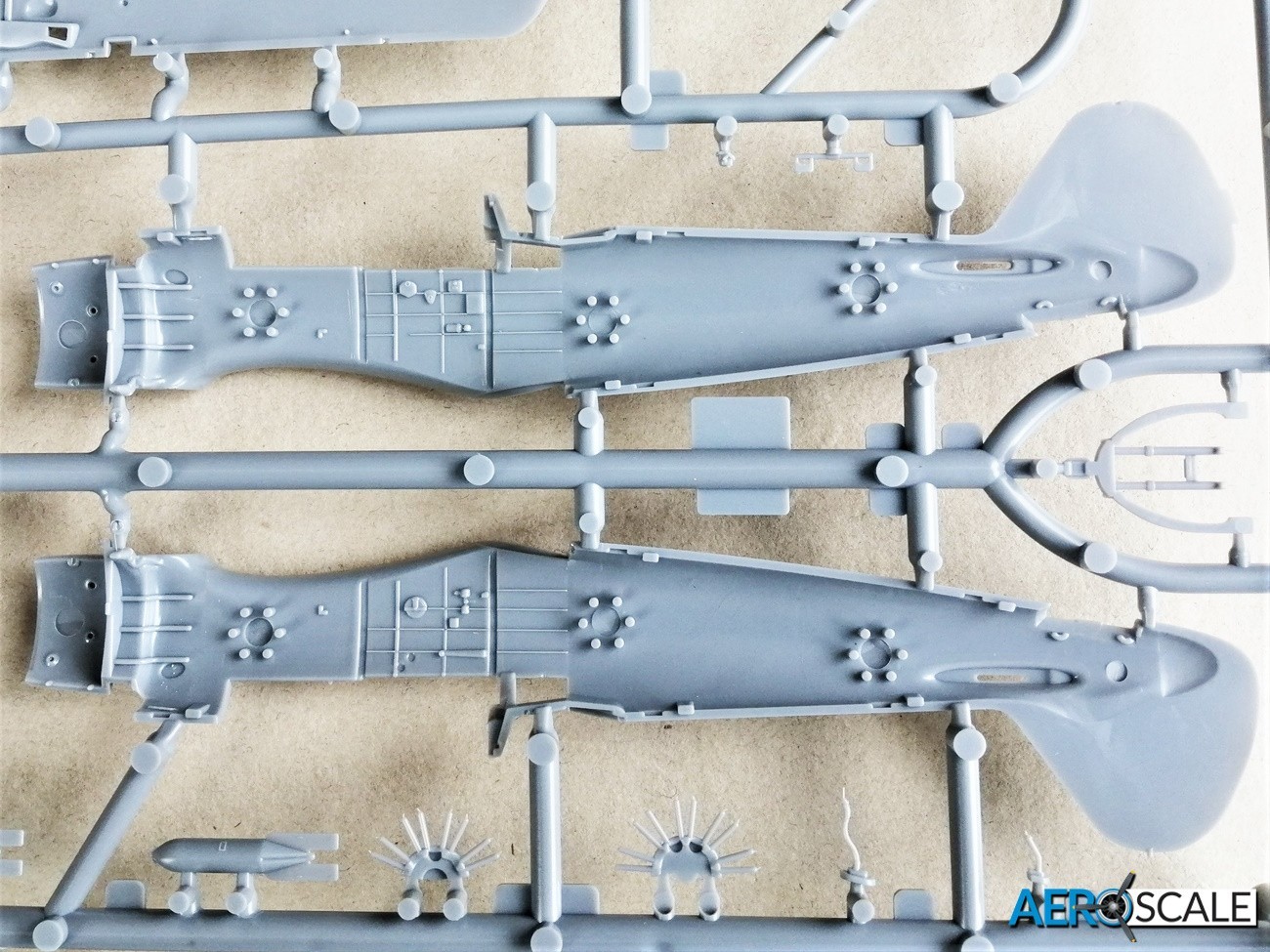
The two separate banks of cylinders and the separate push rods and reduction gear housing as well as the photo etched ignition harnesses will create an impressive looking Ha-45 Homare engine. I doubt you will see much of it as it’s a snug fit inside the fuselage.
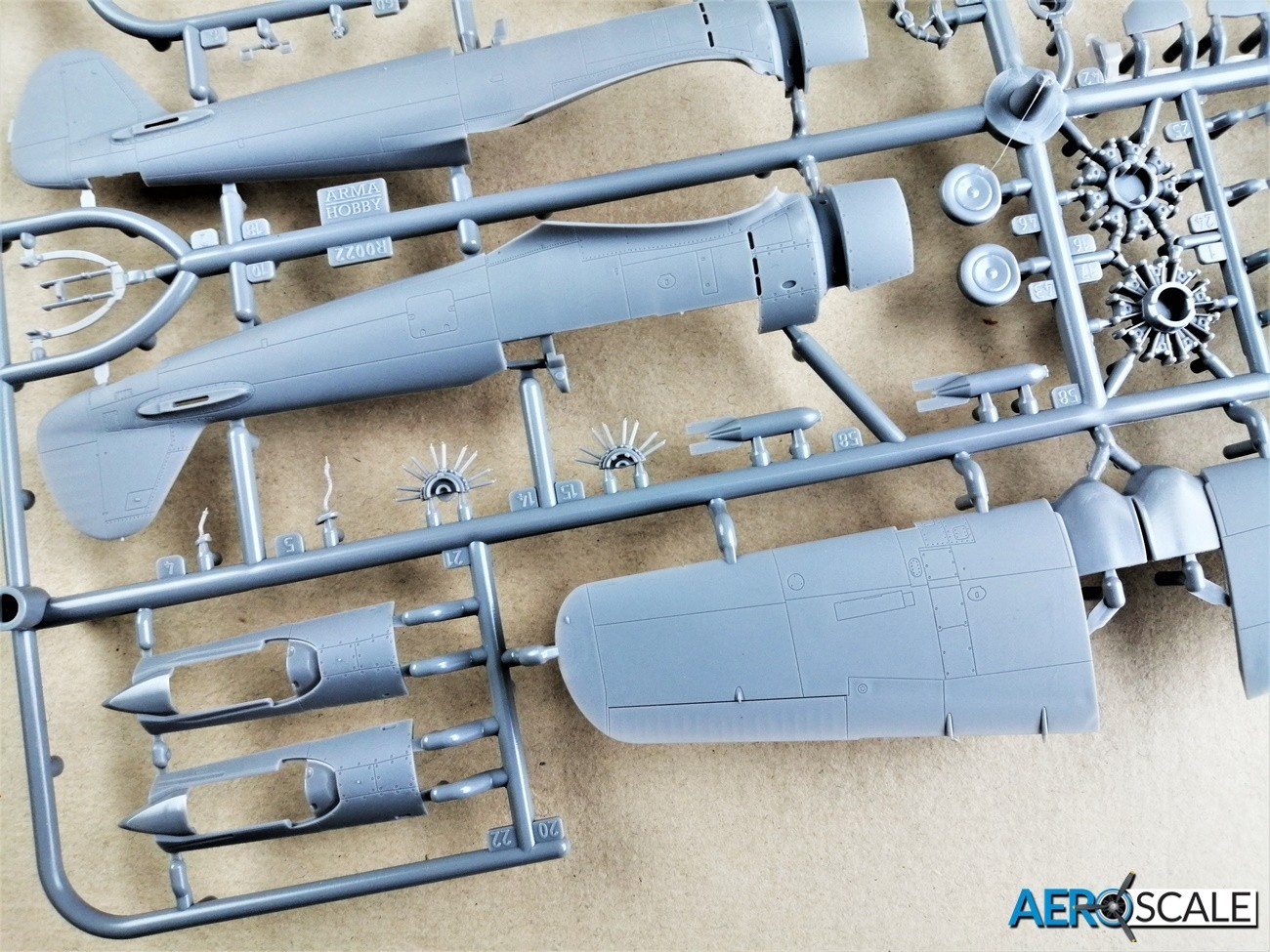

The fuselage halves are split traditionally with left and right halves. The engine, cockpit, and tail wheel all need fitting before the fuselage halves are joined. There are locating tabs to help with alignment. The hatches on the upper and lower part of the engine bay are separate as is the radiator fairings. The cowl flaps are separate and moulded in the closed position. The exhaust pipes are attached to two semi annular pieces of plastic making the fitting of such small fiddly pieces easy to do. The lip around the nose is separate and one piece. The finesse of the moulding and the detail is particularly good around the air intake. The four-blade propeller is one piece with a separate prop boss. At the other end the vertical tail and rudder are moulded in situ.
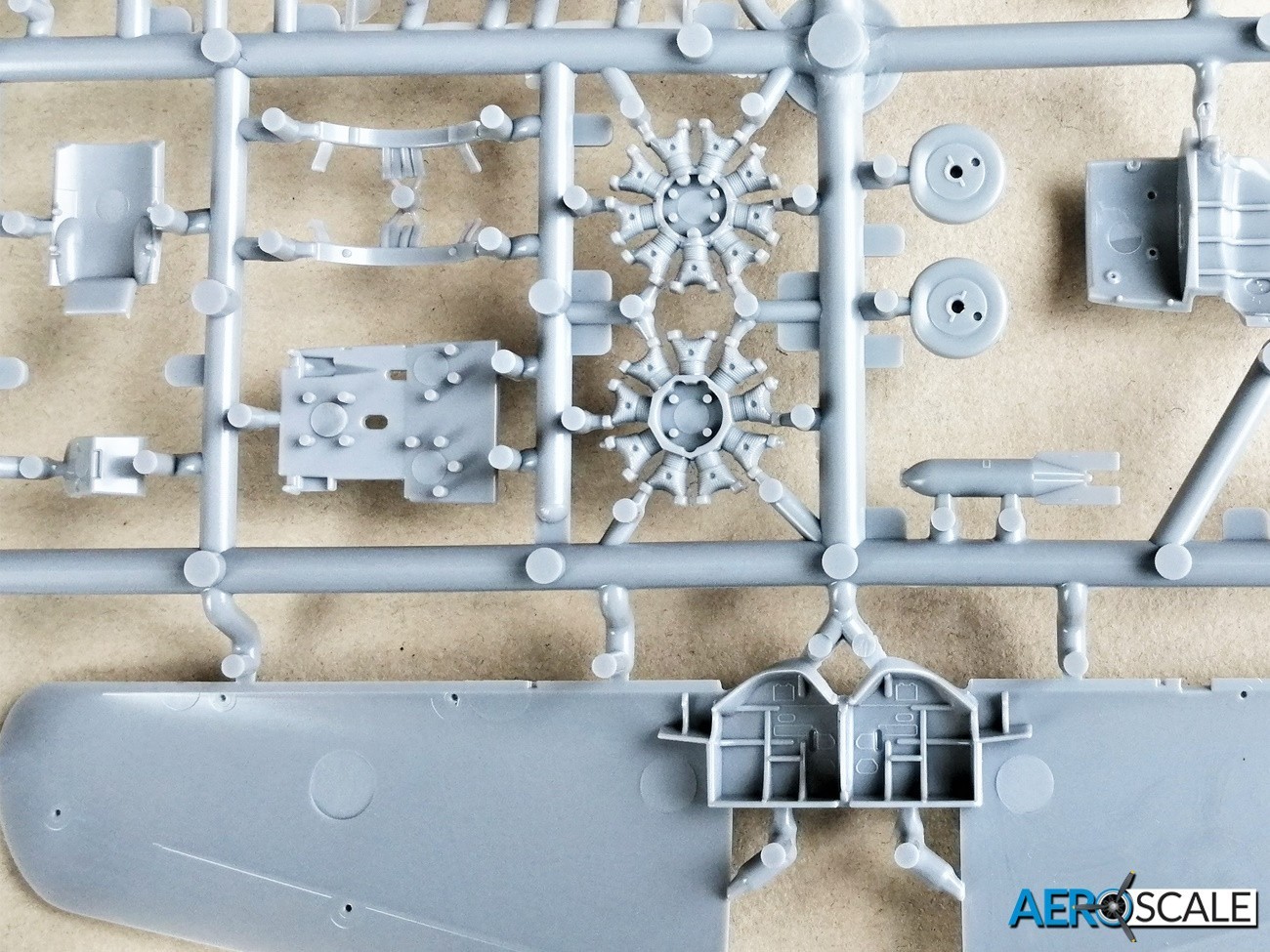
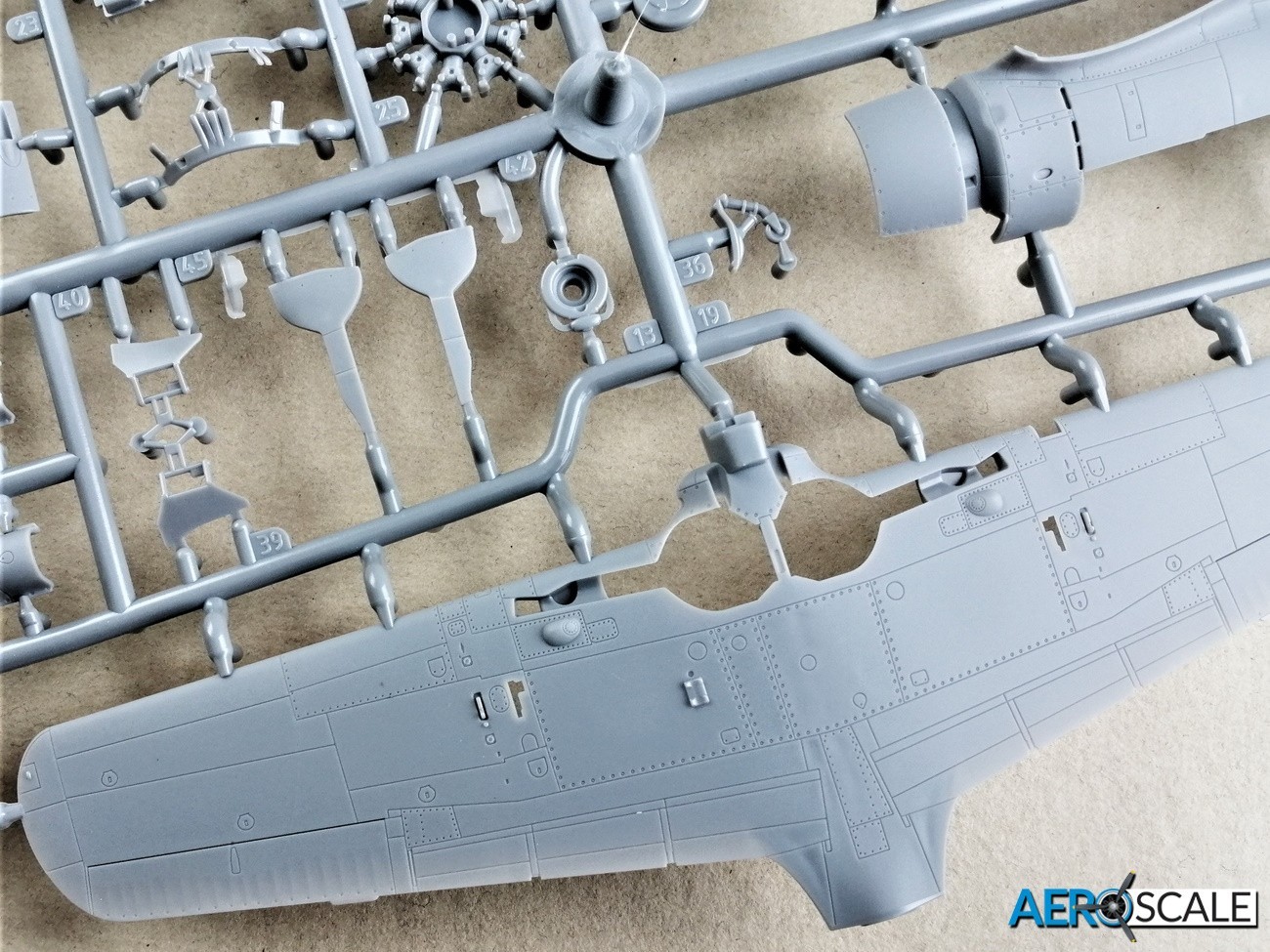
The wings consist of a one-piece full span lower and more commonly with Arma Hobby a one-piece full span upper. The ailerons and flaps are moulded in situ. It is great to see the canvas covered control surfaces represented accurately by Arma Hobby. No sagging canvas between the ribs, just rib tape on show. The walls of the undercarriage bay are moulded to the upper wing and there is some excellent detail in the interior. There are holes already in the wing to accept sway braces for carriage of the bombs or fuel tanks. There are a couple of gun barrels and a landing light cover to add. Both horizontal tail planes are one piece with the elevators moulded in place.
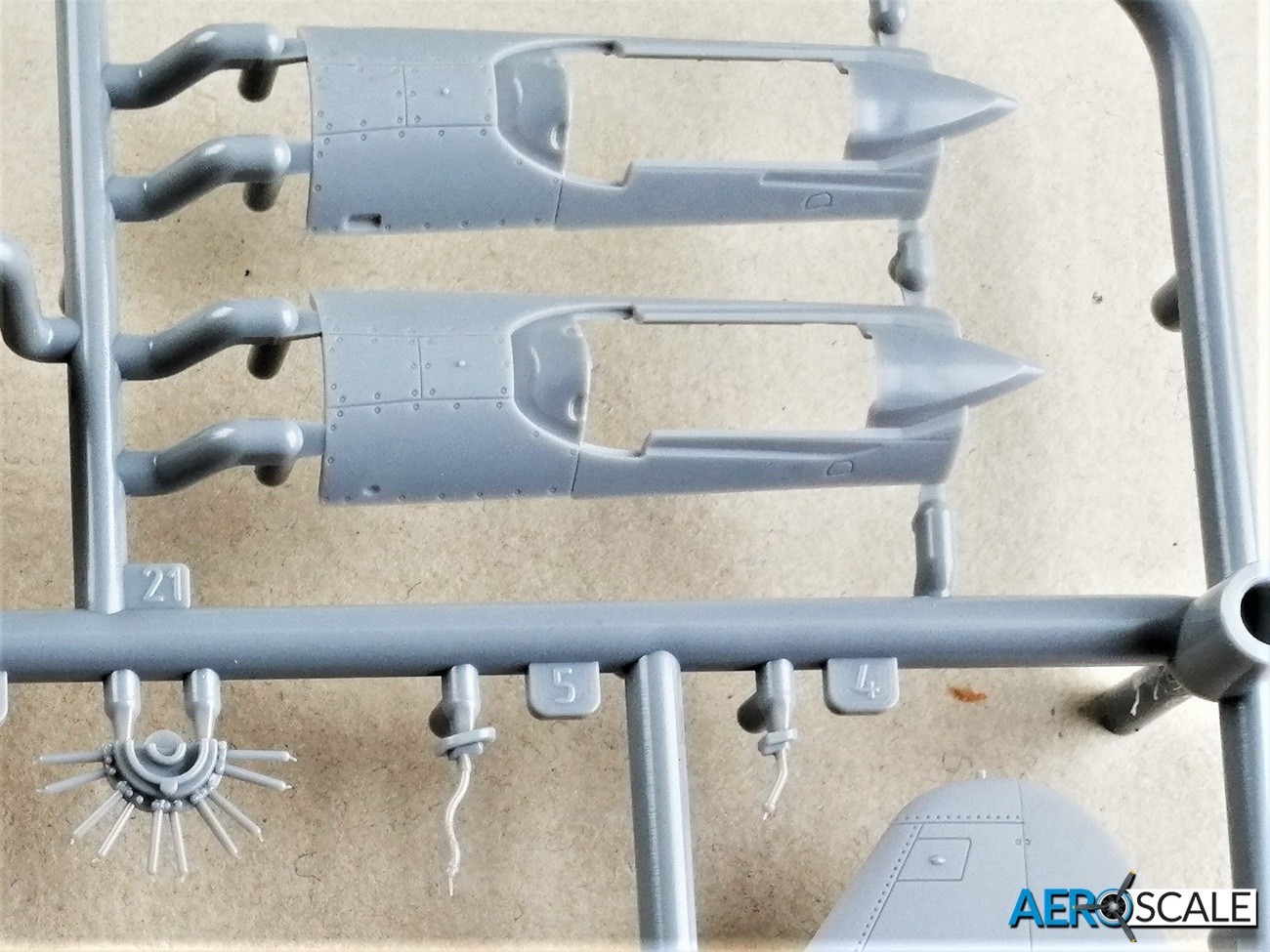
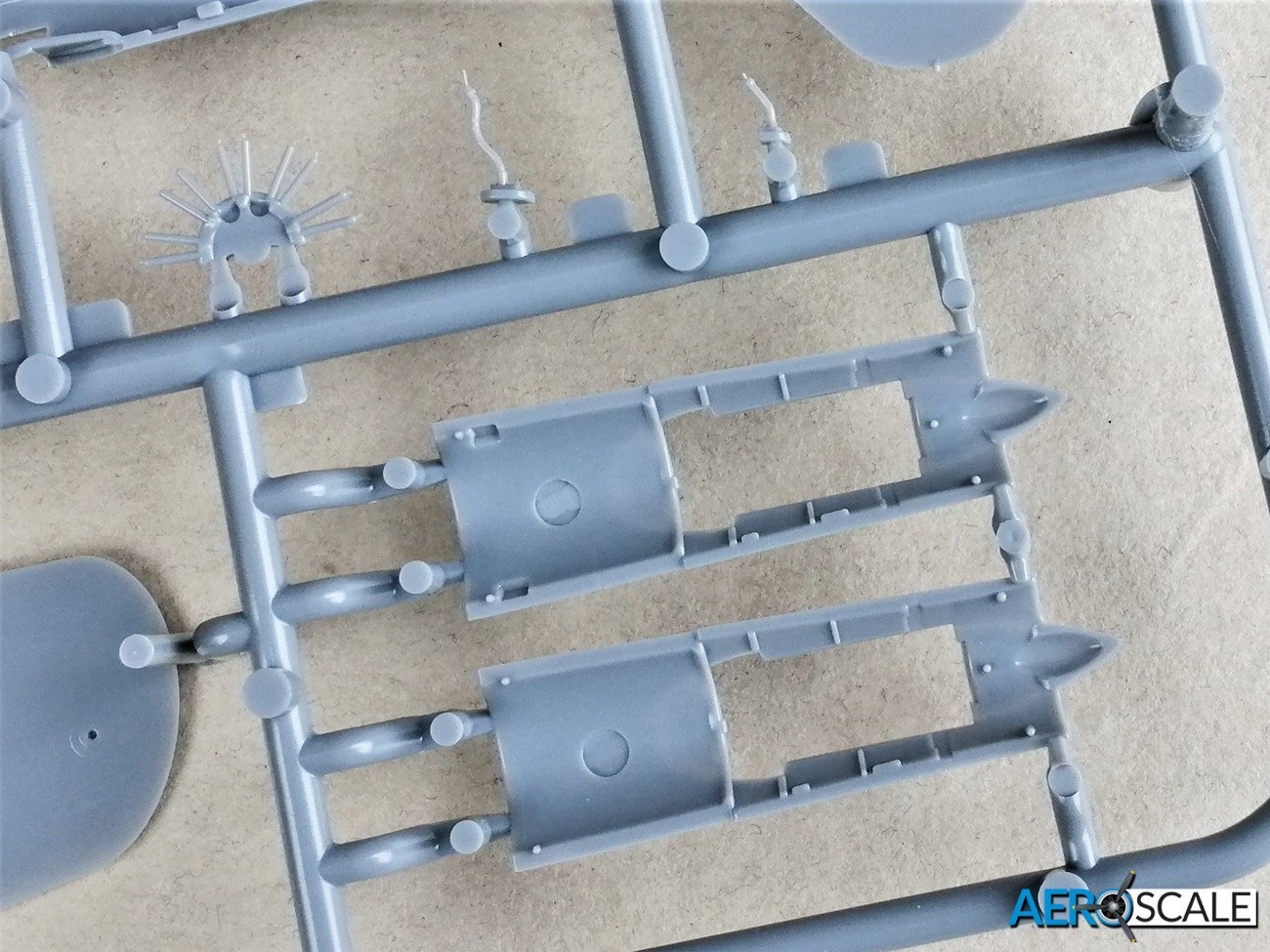
The main wheels are one piece and the tyres are subtly weighted. The rear wheel unit is one piece and superbly moulded. As mentioned, the main undercarriage bay is attached to the upper wing. Detail looks good though you could add hydraulic lines to make it look busier. Detail on the inner doors of the main undercarriage is well executed.
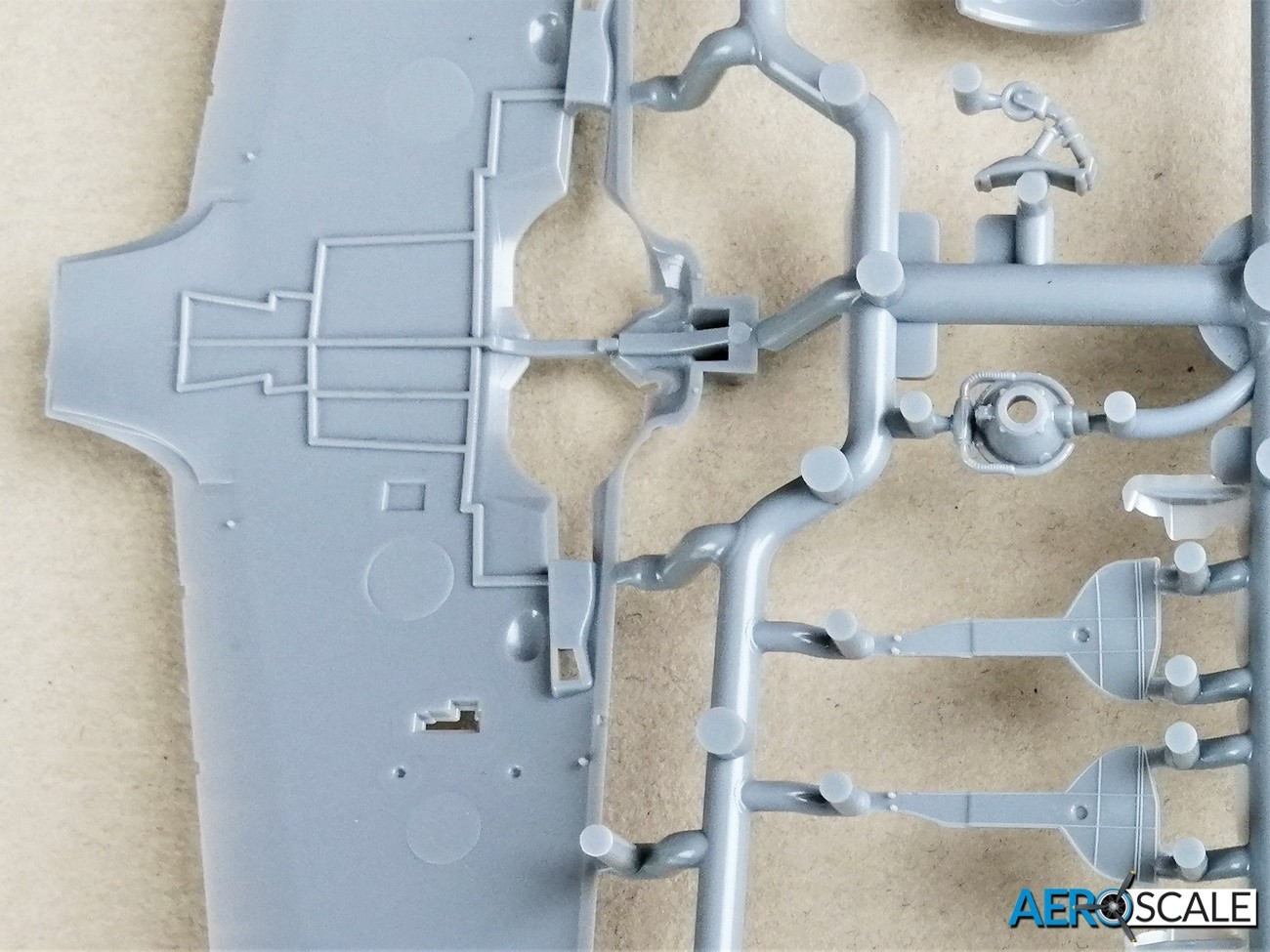
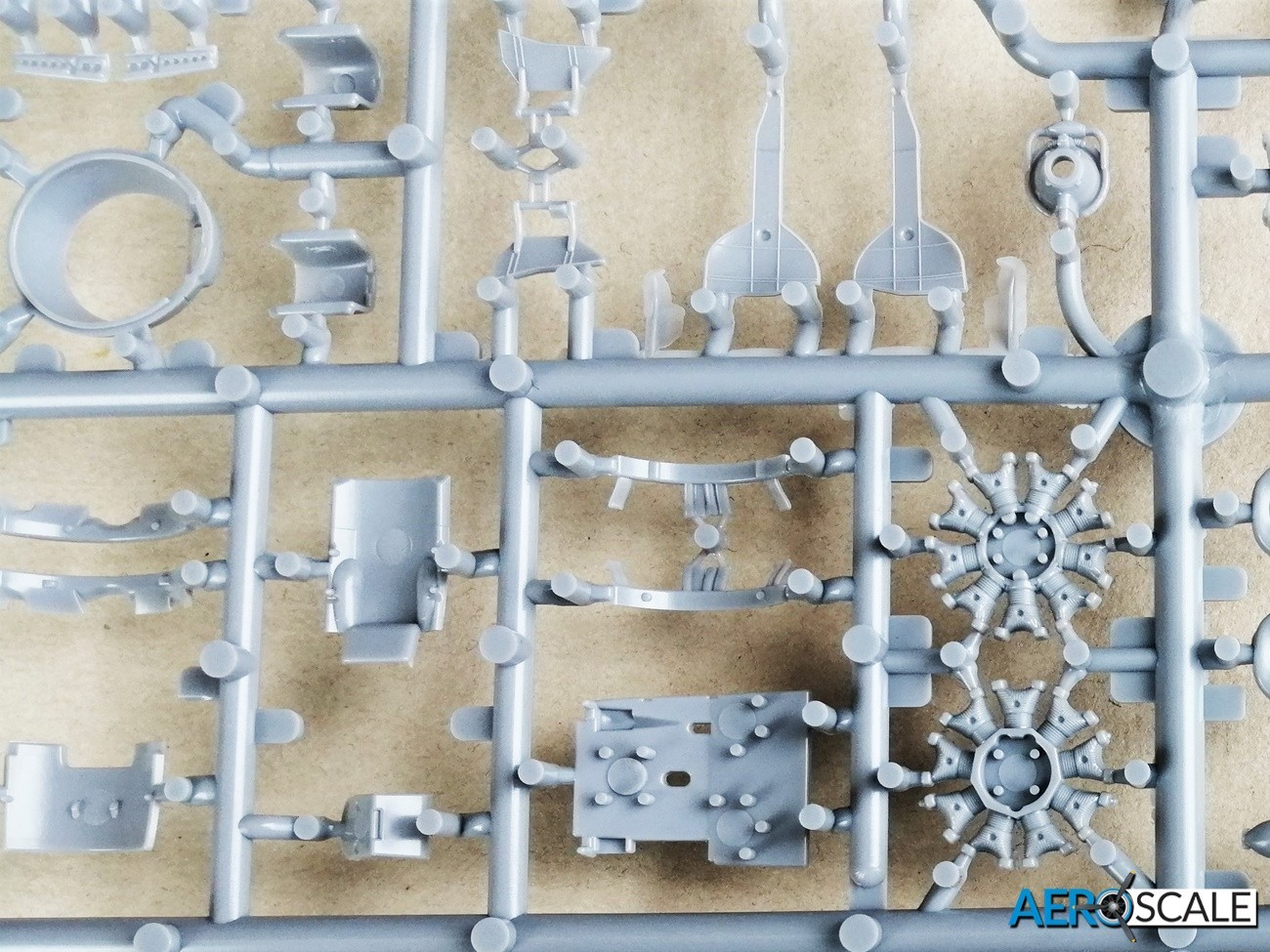
The kit includes a couple of wing fuel tanks as well as a pair of 100kg and single 250kg bombs. The latter is slung under the left wing with a fuel tank on the right counter balancing the weight distribution. The 250kg bomb and fuel tank combination is the one used with this edition. Shackles are included for the bombs and tanks.
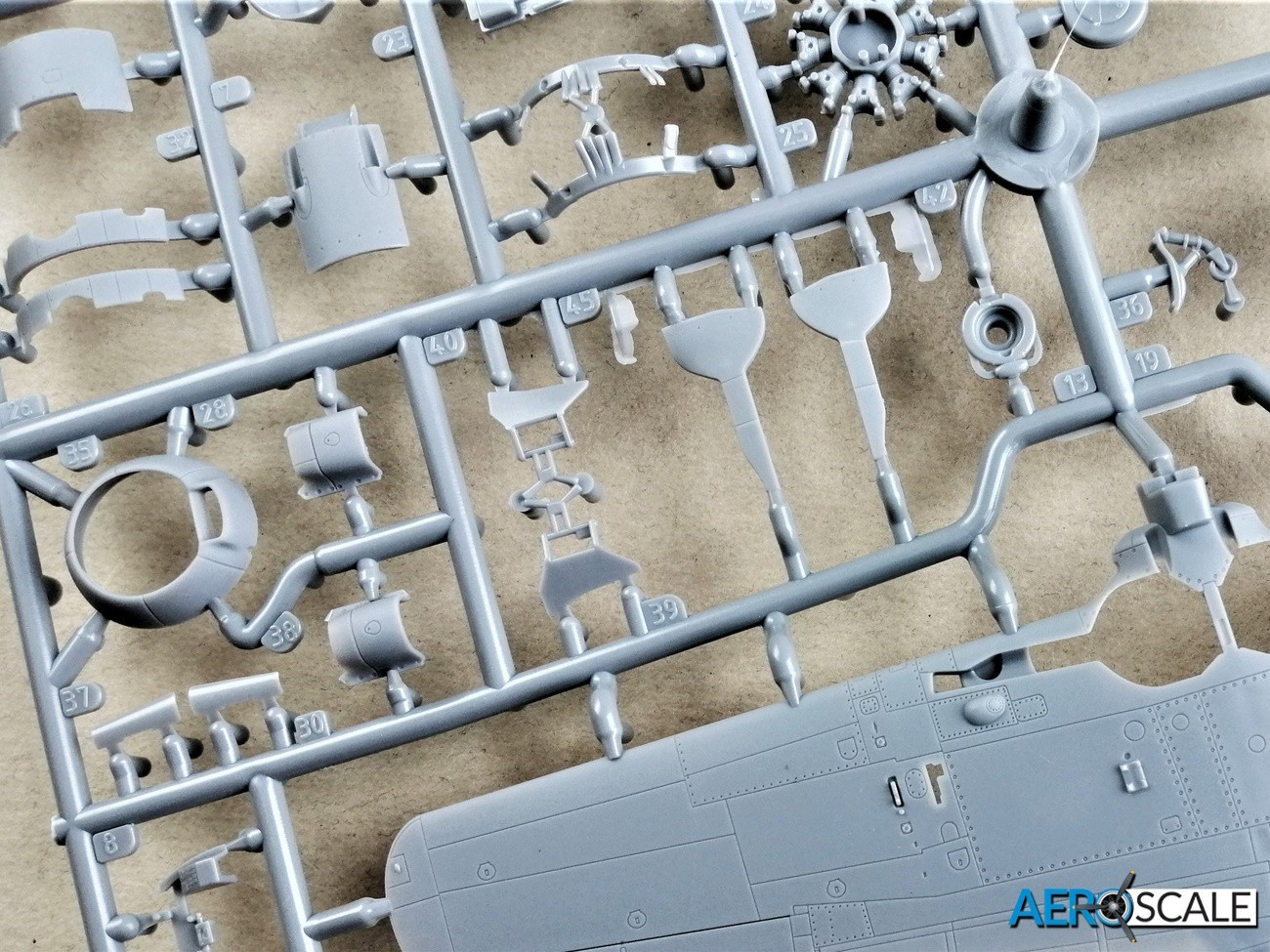
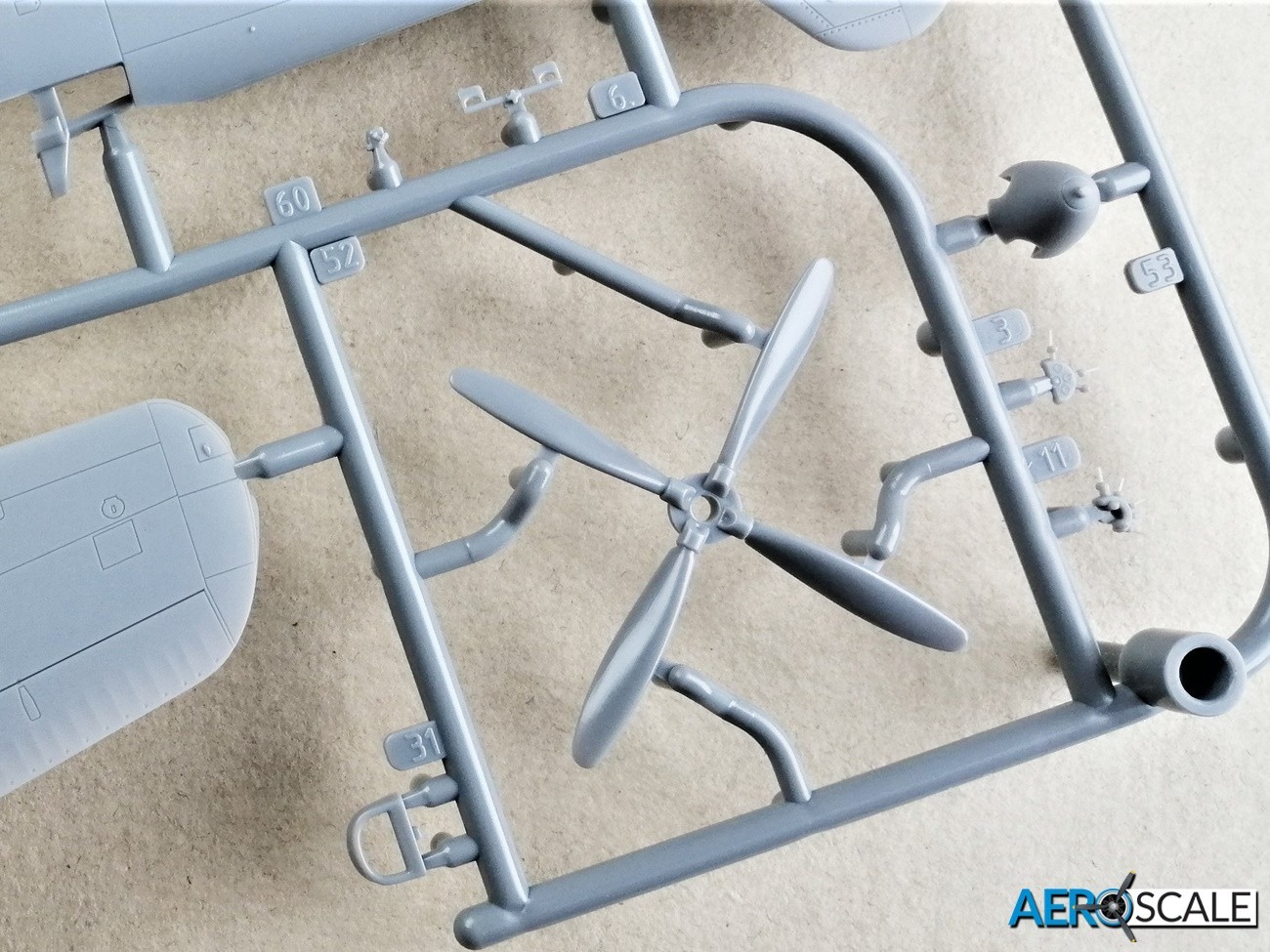
Kabuki paint masks are included for the canopy, windscreen, main wheels, and I think for the single wing mounted landing light. There is no instruction for using them, though the way they are arranged on the sheet its not rocket science to work out where they go.

The decals printed by Techmod look superb: glossy, with good colour density and the definition is superb. Included are all the various tail markings. Cockpit instruments and seat harnesses are provided. The cockpit instrument face look particularly good. Just a few stencils too apply and wing walkways are included.
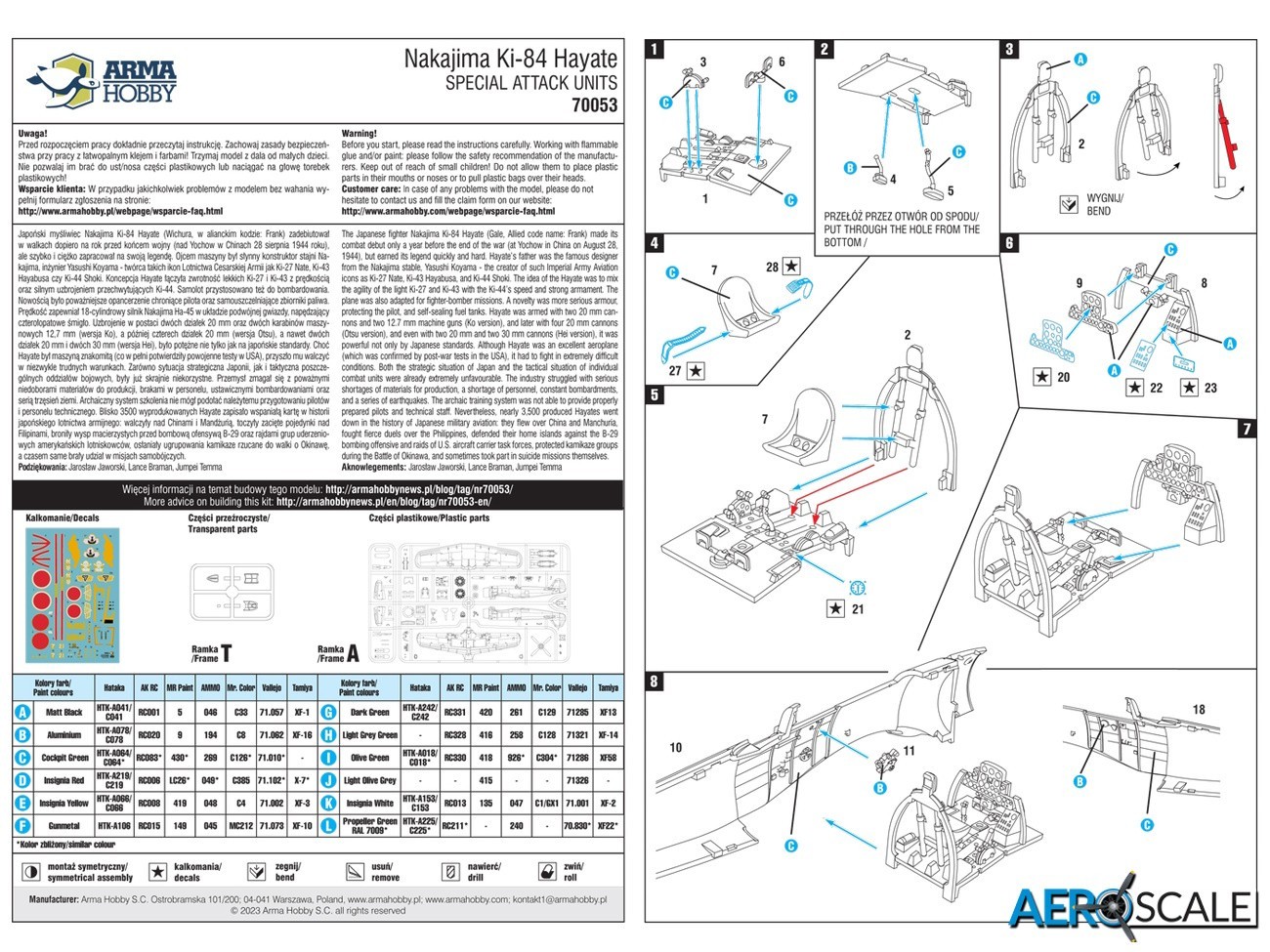
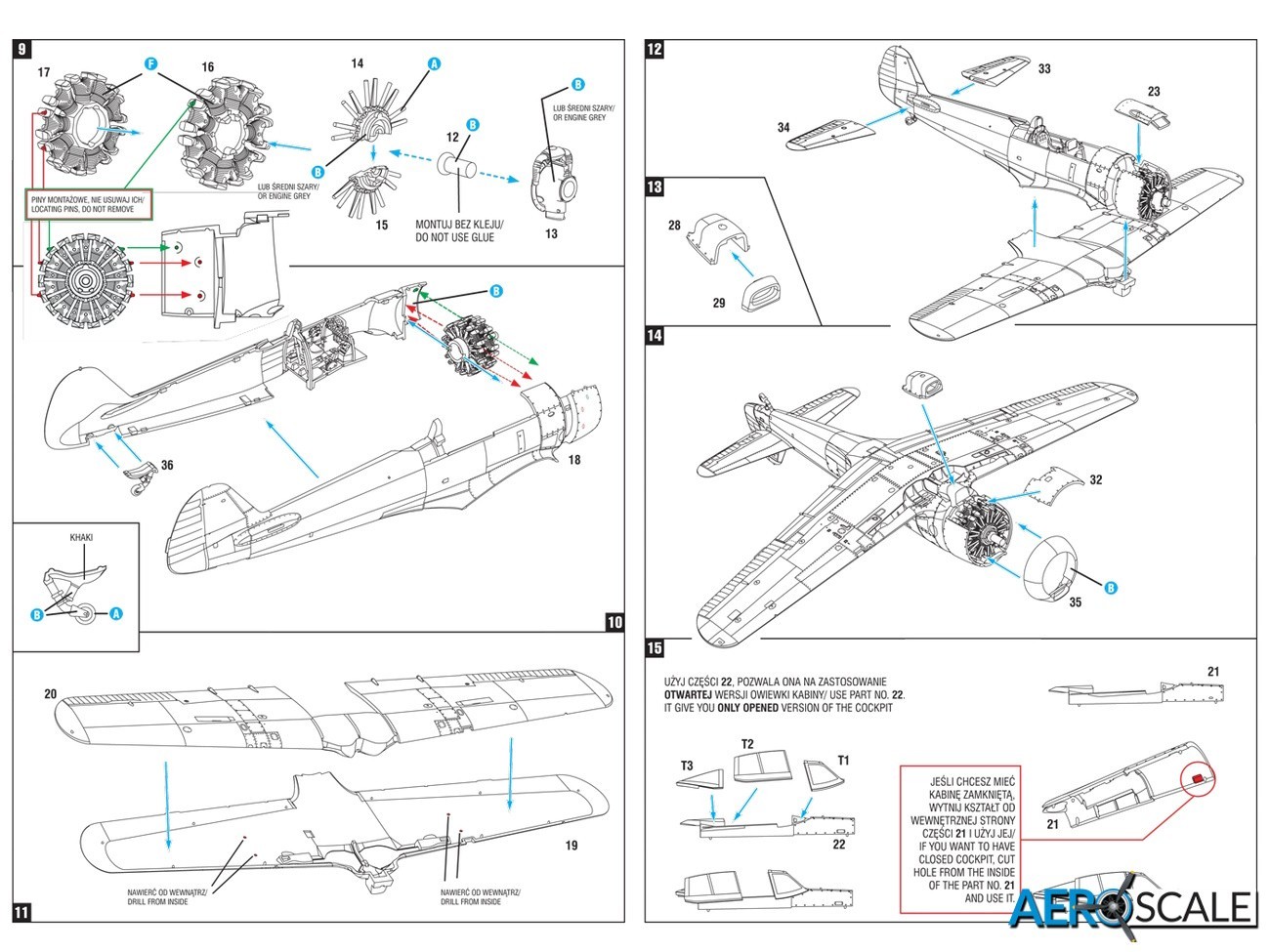
There are three marking options:
- Ki-84 Ko Hayate - 57 Shimbu-tai, pilot: Tadashi Kono, Miyakonojo airfield, Kyushu, Japan, 1945
- Ki-84 Ko Hayate - 58 Shimbu-tai, pilot: Lt. Toku Ueda, Miyakonojo airfield, Kyushu, Japan 1945
- Ki-84 Ko Hayate - 195 Shimbu-tai, pilot: Lt. Fujiyama Nobuho, Awaji, Yura Airfield, Japan 1945
Option one and three feature olive green upper surfaces and light olive grey under surfaces. While option two has dark green upper surfaces and light grey green under surfaces.
The instructions look straightforward. The black line drawings are explicit and the painting guides are in colour. The four-view illustration includes decal placement. There is quite an extensive range of paint manufactures referenced for the colours. They include Hataka, AK RC, Lifecolor, Ammo, Humbrol, Vallejo and Tamiya.
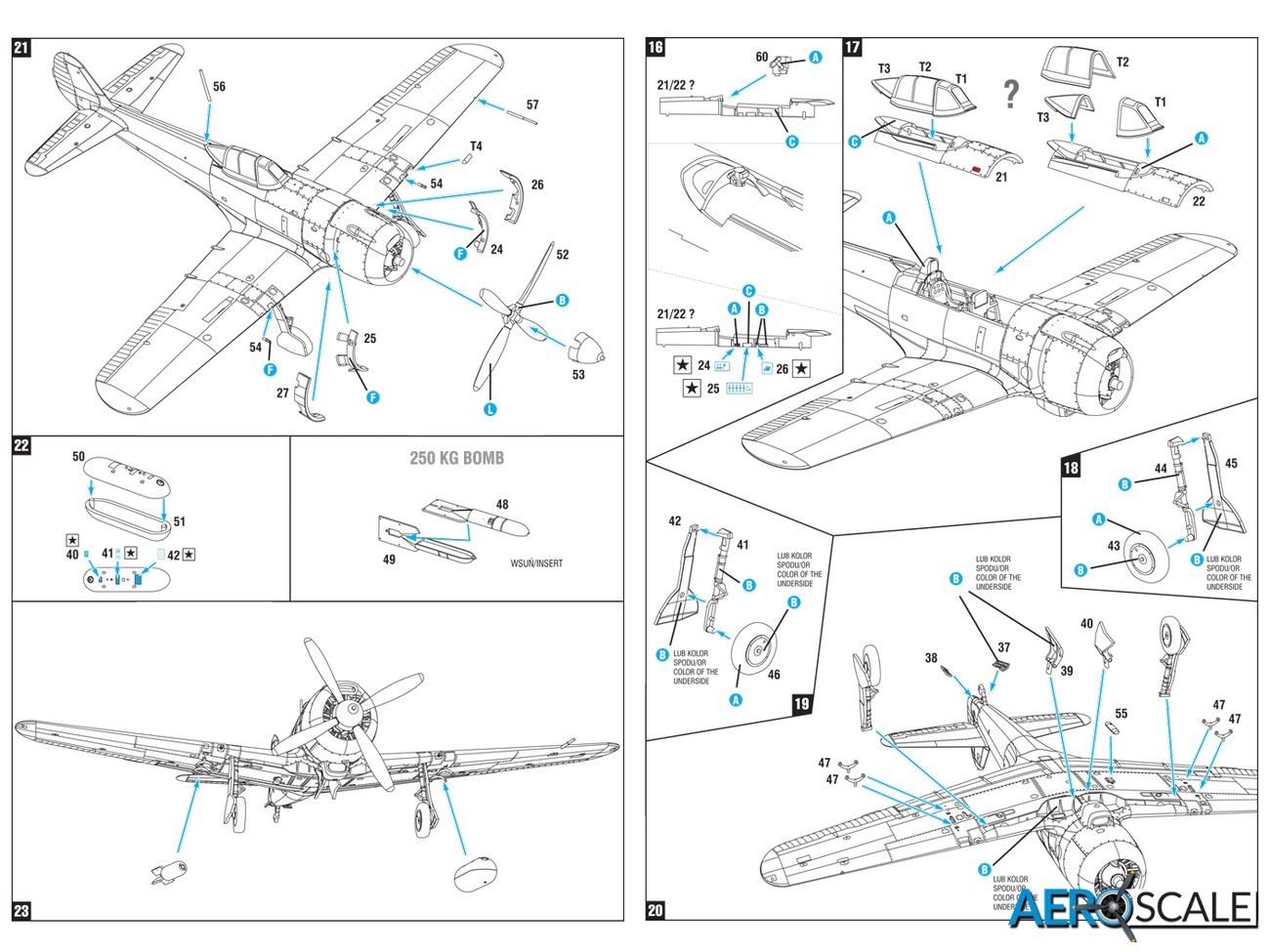
Conclusions
The quality of the surface detail of the Arma Hobby 1:72 scale Ki-84 Ko Hayate is superb and the approach taken with the parts breakdown is excellent. This is an interesting edition from Arma Hobby depicting three aircraft of the Japanese Special Attack Units. The marking options provide quite a bit more colour than your usual Imperial Japanese Army Air Service aircraft. Nicely done Arma Hobby and highly recommended.
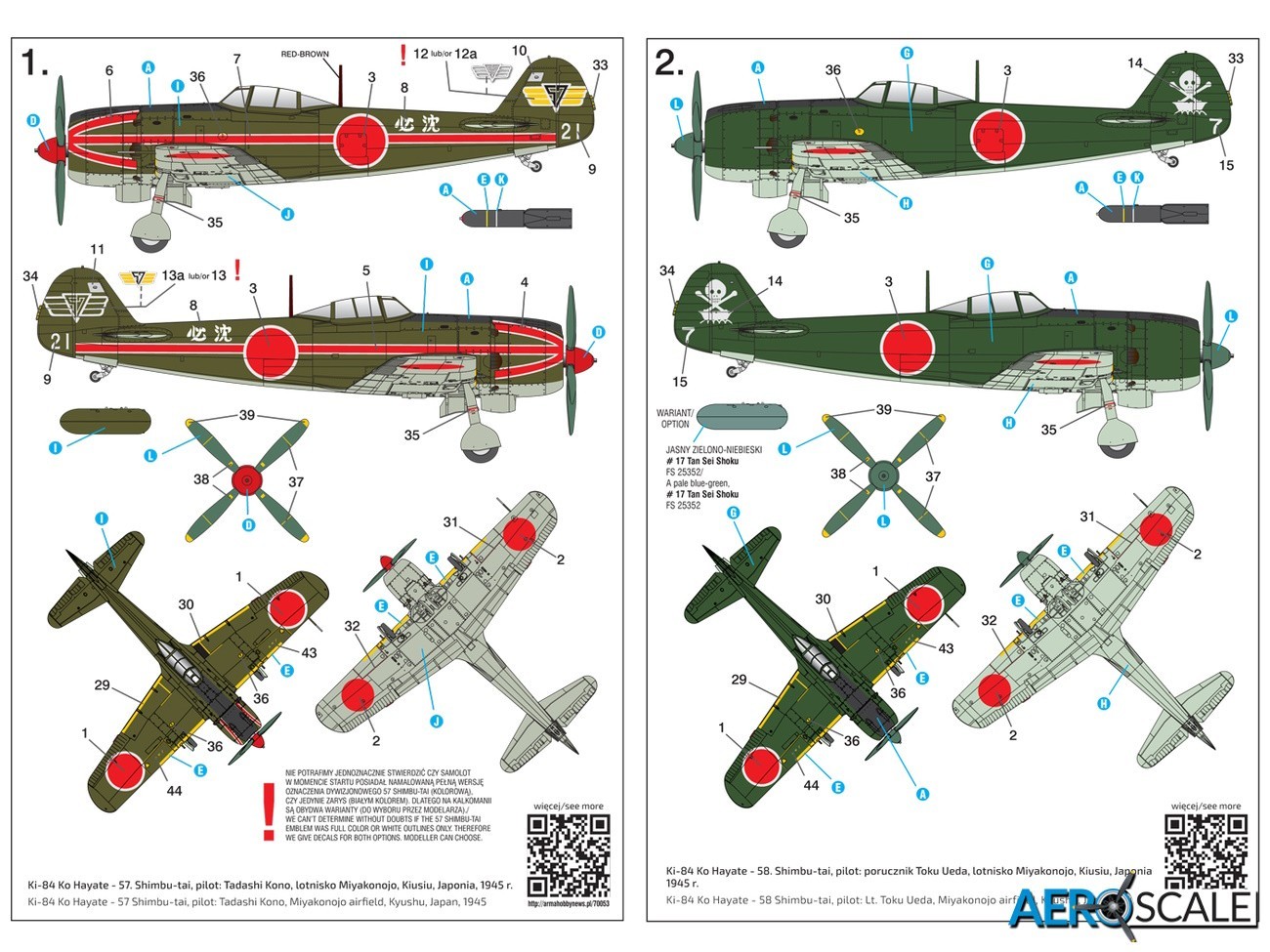
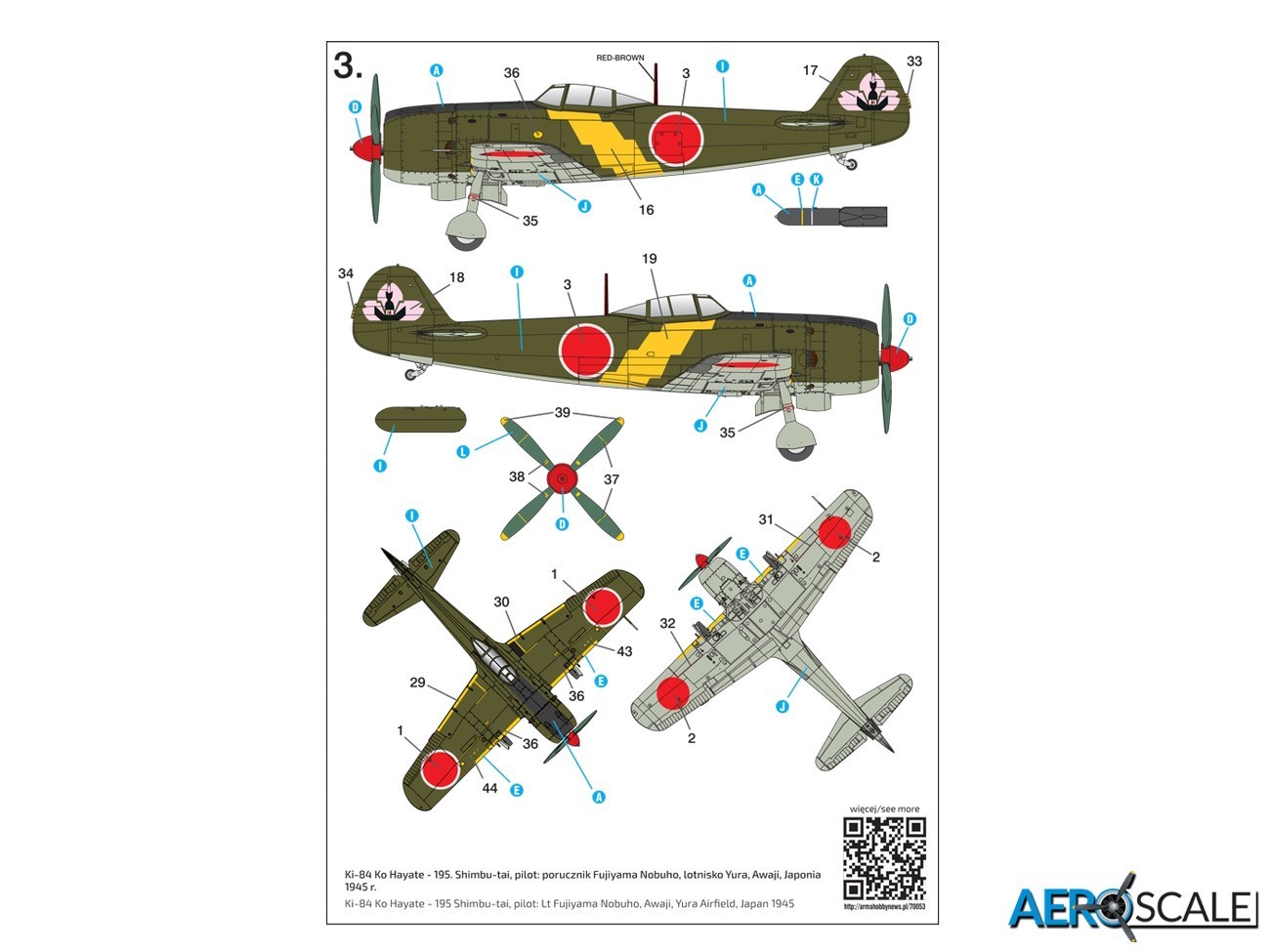
Price: €24.50 from Arma Hobby shop
Many thanks to Arma Hobby for this review sample.
70053 - Nakajima Ki-84 Hayate Special Attack Units – 1:72
Please remember, when contacting retailers or manufacturers, to mention that you saw their products highlighted here – on AEROSCALE.











